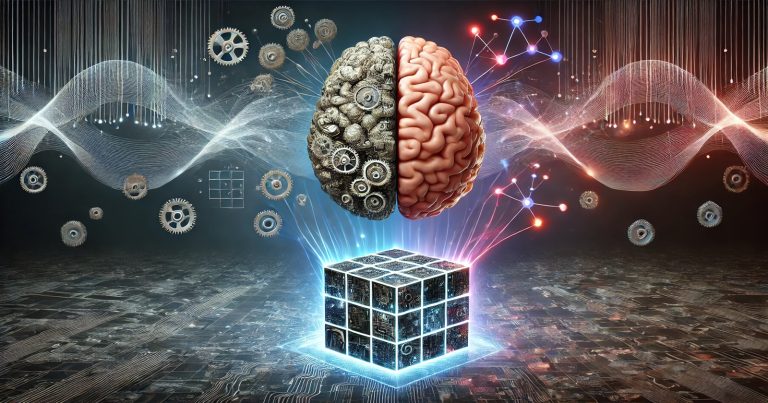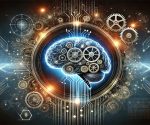Analytical and problem-solving skills assist you in deconstructing issues and determining the correct solutions with facts, logic, and step-by-step techniques. These skills are essential for success in school, work and life. Analytical and problem-solving skills help you understand problems, find smart solutions, and take action to solve things. They cleanse the mind and make it strong. You can piece puzzles together, strategize better, and make the right choice. Over time, this plays a big part in improving your critical thinking skills, decision-making skills, and reasoning skills. Indian students can excel quickly in their studies, careers, and real lives with the help of these skills.
Importance of Analytical and Problem Solving
When you think hard, you get better answers. Critical thinking is working out your brain like exercise works your muscles. August Data makes your ideas crisper and more helpful.
What Are Critical Thinking Skills?
The lack of critical thinking skills takes you away from clarity. You question things like “How can this be?” or “What will happen next?” You do not guess. You check facts. You stay fair and open. This allows you to examine both advantages and disadvantages before making a decision.
Thinking deeper helps you build faster analytical and problem-solving skills. You decompose the problem into small pieces. You have the “why” of the problem understood. And then you can address it at the source. Critical thinking combines with analytical thinking and logical thinking to get full comprehension access.
Why are They Important?
Let’s take an example. Ria is a Class 10 student. Her math scores are low. She doesn’t sink into sadness; she turns on her thinking cap. She learns that she loses points in algebra. She looks in her notebook and notices careless errors. So, she gets more practice in algebra. Her marks improve.
This is an example of how critical thinking skills enhance your data analysis abilities. You validate patterns and facts, not feelings. You also improve your reasoning abilities. You think of “if-then” ideas. Like, “If I study early, I don’t panic during tests.”
Here’s how these skills contribute:
| Situation | Critical Thinking Use | Result |
| Poor marks in science | Looks for weak topics and fixes them | Better results |
| Family argument | Thinks before reacting, understands both sides | Peaceful talk |
| Time problem with studies | Makes a daily plan and removes wasteful tasks | More free time and less stress |
It connects analytical thinking with critical thinking skills in all cases. They also develop strong problem-solving skills. They assist you with school projects, daily decisions and future careers.
How to Develop Critical Thinking Skills?
To grow these skills:
- Teach them to ask more “why” and “how” questions in class.
- Read case studies or news articles and think to yourself, “What was the error? What can be done better?”
- Speak in the group and listen to different opinions.
- Instead of thinking first of an answer, write down ideas.
- You can teach people to solve small problems at home, like missing keys or fixing mobile settings.
These little habits create your big mind. And they improve your troubleshooting skills. You begin opening real problems, not just guessing.
Your analytical and problem-solving skills become sharper when you practice critical thinking on a daily basis. You notice things that other people don’t. You maintain perspective in large problems and find clever exits.
The Best Problem Solving Techniques
Solution means providing answers to difficult problems. You rely on facts, logic, and ideas. Good techniques will enable you to sift through the data to the best answer, fast and right. These also set you out your decisions strong and smart.
Why Do We Need Problem Solving Strategies?
Your mind has no way to be guided without steps. You can freak out or take the wrong route. However, problem solving techniques provide you with one roadmap. They demonstrate how to decompose any problem and solve it piece by piece.
These measures also corroborate your decision-making abilities. Your decisions aren’t a function of mood when you use a method. You pick what works best.
Top Techniques That Help
So, Since learning good problem-solving skills is very crucial in our programming journey, let’s learn about them: The 5 Whys this technique is getting to the root of the problem. You ask, “Why?” five times.
Example: Sorry I didn’t do better on the math test.
- Why? I didn’t study.
- Why? I forgot about the test.
- Why? I didn’t note the date.
- Why? I don’t have a planner.
- Why? I never used one.
So the problem really is no planning. You fix that.
- Brainstorming: You have to list tons of ideas, and don’t judge. Then you choose the best one. This expands your creative problem-solving skills.
- SWOT Analysis: You put a tick next to Strengths, Weaknesses, Opportunities, and Threats. This comes in handy when you have two or more options. For example, Opting for the science or commerce stream
- Trial and Error: You try a way. If it fails, you try another. You learn from mistakes. It develops troubleshooting skills and reasoning skills.
- Flowchart or Mind Map: Draw the steps in a diagram. It is useful if problems are big or multi-step.
How RPGs Help You Become A Better Decider?
Your mind operates in the steps, and such mindset is critical to your decision-making skills. You stop using luck. You begin with logic and facts.
Imagine this:
- Your phone stops working.
- You panic and reset it. You lose data.
- But if you were doing the 5 Whys or a mind map, you would discover that the problem was only a setting.
- This is the magic of problem-solving practices.
- You use data analysis skills as part of these steps. You check what has gone wrong, when, and how often.
When to Use Which Technique?
| Problem Type | Best Technique | |
| Root issue hidden | 5 Whys | |
| Need new ideas | Brainstorming | |
| Choosing between options | SWOT | |
| Not sure what works | Trial and Error | |
| Many steps or teams involved | Flowchart/Mind Map |
These techniques expand your total brainpower through regular use. Not only solve problems but also grow to be smart in every area.
Logical and Strategic Thinking Skill of Analysis and Solutions
They think critically and strategically. They don’t just act fast. They act smart. They look at the big picture and act step by step.
What Are Logical and Strategic Thinking?
Logical thinking: thinking based on rules and facts to get answers. You follow the order. You see if something adds up.” Strategic thinking is long-term thinking. You plan. You set your target, and then you figure out how to get there. All three contribute to your analytical thinking as well as data analysis skills. They don’t just act fast; they help you act with a plan.
Why These Skills Matter
Imagine Ravi as an example of this scenario. He wants to win a science fair.” He doesn’t act on any idea willy-nilly. He uses logic.
- He checks past winners.
- He sees what judges like.
- He chooses a project with definite outcomes.
- He plans a week, and breaks it into segments.
- He evaluates his model and produces a report.
Relevance to ACCA Syllabus
Key components of the ACCA syllabus include Analytical and problem solving skills, such as Financial Management, Strategic Business Leader (SBL), and Performance Management. Students are required to analyse financial scenarios, complete a financial statement, and offer strategic solutions. This type of skillset enables them to study variances, investment options, and business cases that are pivotal to successfully passing up assessments and thriving into a professional finance job.
Analytical And Problem Solving Skills ACCA Questions
Q1 How variance analysis is part of performance management?
A) To compute tax obligations
Another use case is snake for cash flow statement preparation
C) To evaluate actual/effort versus proposed/budget performance
D) Decrease of stock of inventory
Ans: C)To evaluate actual/effort versus proposed/budget performance
Q2. So, when looking to support projects, what’s the best metric to go by in terms of potential for financial impact?
A) Debt-to-equity ratio
B) Payback period
C) Inventory turnover
D) Net working capital
Ans: B) Payback period
Q3: Which cost is most useful for decision-making?
A) Sunk cost
B) Historical cost
C) Fixed cost
D) Incremental cost
Ans: D) Incremental cost
Q4: What would a strategy help a company trying to
A) Increase variable cost
B) Decrease the selling price
C) Increase fixed costs
D) Increase contribution/unit
Ans:D) Increase contribution/unitt
Q5: What title is given to the matrix used to assess strategic alternatives in the ACCA Strategic Business Leader paper?
A) ABC analysis
B) SWOT analysis
C) EOQ model
D) Marginal costing
Ans: B) SWOT analysis
Relevance to US CMA Syllabus
Analytical and Problem Solving skills are basic building blocks of US CMA syllabus which are required for better decision making, planning and performance evaluation. Candidates are expected to look at financial information and apply costing methods to review budgets and recommend action. These capabilities are essential at the intersection of long-term strategy and operational excellence in real-world management accounting systems.
Analysis and Problem Solving CMA Questions
Q1: What is relevant information for a manager regarding contribution margin?
A) Net profit before taxes
What percentage of fixed costs are being covered by sales
C) Fixed assets’ resale value
D) Historical cost of sales
Ans: B) Output (made and sold), variable cost, fixed cost
Q2: In which context, the learnings of CMA Part 1 support more towards managerial decision making?
A) GAAP
B) Ratio analysis
C) Variance analysis
D) Bookkeeping entries
Ans: C) Variance analysis
Q3: Name the cost which is relevant to the decision?
A) Old machinery book balue
B) Fixed overheads
C)Price of new commodity in the future
D) Depreciation previously registered
Ans : C) Future cost needed to replace a new component
Q4: Where do you apply break-even analysis
A) Inventory turnover rate
B) Cost of capital
Unit Sales to Breakeven All Costs
D) Net income
Ans : C) Sales Volume for Total cost to achive breakeven
Q5: Goals of the budgeting — sensitivity analysis
A) To fix previous errors
B) To find the lowest price
C) Assess the impact of the changes on outcomes
D)) To keep money flowing
Q) Why do we measure without normalisation? No one else answers.
Relevance to US CPA Syllabus
On the other hand, the problem-solving aspect forms part of the four sections of the US CPA exam. Candidates study and assess principles of taxation, auditing and financial reporting and conflict resolutions in intricate accounting issues. Analytical skills — the ability to identify risks, assess internal controls and come to evidence- based and data- driven conclusions.
Analysis and Problem Solving CPA Questions
Q1 Fill in the response C test in the line the other book make not mention of a transaction was recorded?
A) Analytical procedures
B) Test substantif de détails
C) Test of controls
D) Cut-off testing
Ans: D) Cut-off testing
Q2: What is less part of planning an audit when assessing risk?
A) Trend analysis
B) Ratio comparison
C) Review of internal control
D) Sampling
Ans: C) Internal Control Assessment
Q3: What is the best measure of short-term liquidity for finance?
A) Return on equity
B) Quick ratio
C) Asset turnover
D) Debt ratio
Ans: B) Quick ratio
Q4: When you identified a company as bearing the risk of going concern, what action did you take?
A) Rising retained earnings
B) Low debt-equity ratio
C) Cash flows from operations (negative)
D) Stable revenue
Ans: C) Cash flows from operations (negative)
Q5: How does scrutiny bring to light the strange account balance?
A) External confirmation
B) Analytical procedures
C) Tracing
D) Reperformance
Ans: B) Analytical procedures
Relevance to CFA Syllabus
Analytical and problem-solving skills are the biggest focus areas of the CFA program. They also inform work on equity valuation, portfolio management and ethical analysis. Candidates sift through financial statements and trends in economic activity, crunch numbers. Your base knowledge from the CFA syllabus is a bunch of skills that prepares you to analyze and solve a problem. They can assist with analysis and valuation, portfolio management and review. Candidates read balance sheets, macroeconomic trends and quantitative data — to make investments. These features serve the individual trader in a sequential method of contemplating the asset pricing, the movement speculation for the asset and a strategic throttle to contain the risk perimeter whilst making the investments.
Analytic and Problem Solving Skills CFA Questions
Q1 — Which model views stocks as expected dividends put into net present value?
A) Black-Scholes Model
B) Gordon Growth Model
C) CAPM
D) DuPont Analysis
Ans: B) Gordon Growth Model
Q2: What metrics do you care about, in terms of how effectively a company is deploying its assets to generate sales?
A) Interest coverage ratio
B) Return on equity
C) Asset turnover ratio
D) Current ratio
Ans: C) Asset turnover ratio
Q3. Now, let’s see some examples with data with title of the output:
A) Tax liability
B) Profit margin
C) Investment risk
D) Dividend growth
Ans: C) Investment risk
Q4: Which analysis determines a firm’s internal strengths and external threats?
A) Regression analysis
B) Financial ratio analysis
C) SWOT analysis
D) Monte Carlo simulation
Ans: C) SWOT analysis
Question 5: What is the NPV in Capital budgeting?
A)Recovery Time of Cost
B) Profit margin
C) Cash (tracking EVERY SINGLE dollar that came in, at what point it came in)
D) Total cost of capital
Ans: C) Cash (tracking EVERY SINGLE dollar that came in, at what point it came in


